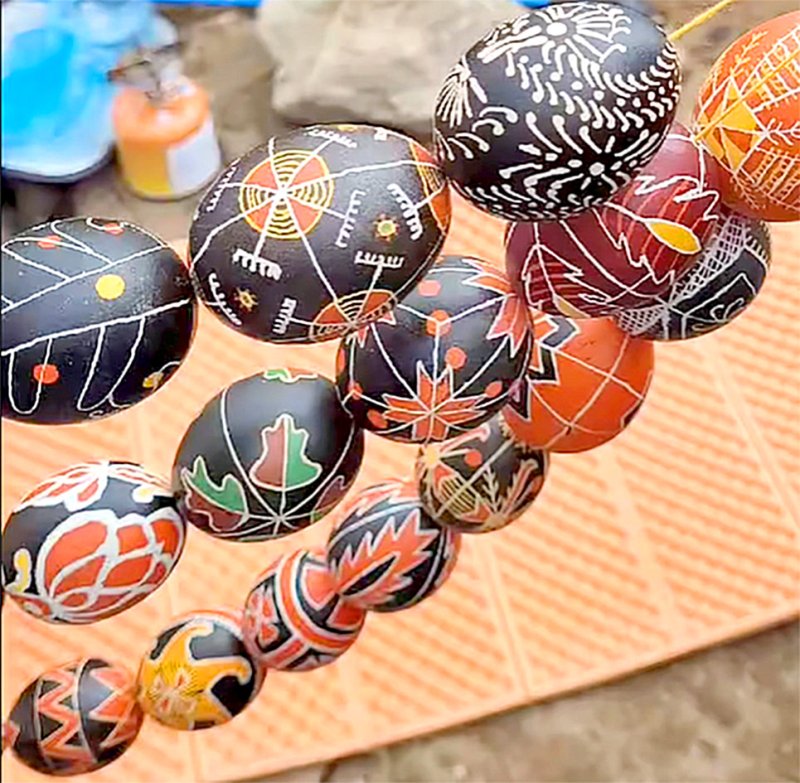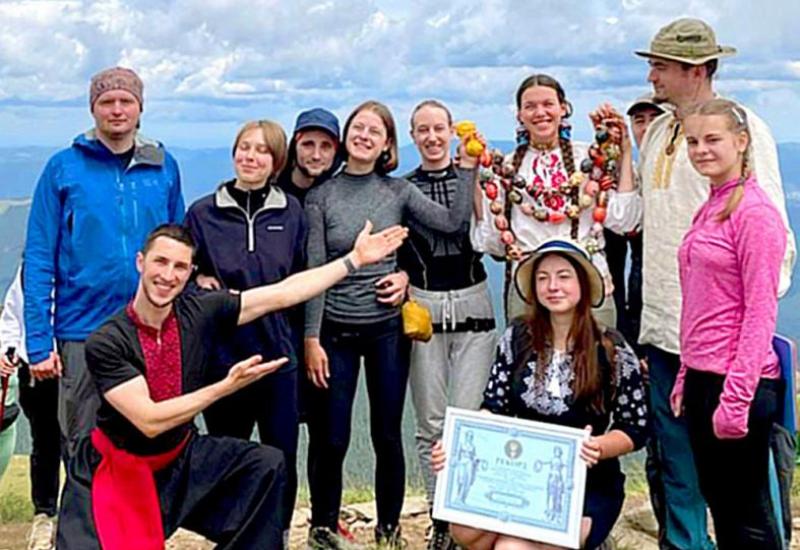The record of Ukraine in the nomination "The largest number of hot wax painted Easter eggs on Hoverla" was set in the summer by representatives of the KPI Globus tourist club. These amulets will be sold at a charity auction, and the proceeds will be transferred to the needs of the Armed Forces of Ukraine.
The event was initiated by Kyiv Easter egg painter Anna Kotlina. She has been painting eggs for over 15 years, studying ornaments, combinations of symbols and colors in different regions of Ukraine. She also conducts online lessons and master classes on Easter eggs for children and adults. In her opinion, joint creativity is an immersion in the traditions of the past and present, and now it is also a connection with one's country, despite the distance and borders. She travels around Ukraine, experiments with natural dyes, and conducts on-site classes for internally displaced persons. Such training is a kind of art therapy in these difficult times. The artist mostly spends the proceeds on equipment for military medics and the production of camouflage nets. "It is thanks to the military that we can realize our ideas and introduce the tradition of Easter egg making to people in Ukraine and around the world," she says.
The presentation of the national Easter egg in the world is not just a matter of words. The fact is that in 2018, the Ministry of Culture of Ukraine, at the request of the National Museum of Folk Art of Hutsul and Pokuttya, included the Hutsul Easter egg in the list of intangible heritage of Ukraine. After that, the Ministry of Culture submitted an application to include the Ukrainian Easter egg in the UNESCO list of intangible cultural heritage. All technical formalities have been completed and we expect a final decision next year. "Our pysanka is not only a symbol of traditions that have been passed down in almost every Ukrainian family from generation to generation," says the craftswoman, "It is, above all, an element of our national identity and originality. Pysanka is an absolutely unique work. It fascinates with its elegance, perfection, richness of compositional variants, ornamental elements and motifs."
Pysanky are fascinating, so when in the spring, on the eve of Easter, friends-tourists gathered to paint Easter eggs, they came up with the idea to combine a weekend hike in the Carpathians with the creation of painted amulets. The members of the Globus tourist club, KPI graduates and students, were active and experienced in tourism and Easter egg making. So it was they who later painted 43 Easter eggs on the highest peak of the Ukrainian Carpathians and received a certificate from the Ukrainian Book of Records. It is worth adding that the ornaments were reproduced based on samples of Easter eggs from all regions of Ukraine (except Crimea, because they did not create Easter eggs there). In particular, among them were recognizable signs with the sun and stars, symbolizing life-giving warmth and cosmic energy. On that day, they seemed to be appeasing the clouds so that it would not rain while the work was going on, and gave strength to realize the pysankas' plan. And, of course, strength for Ukrainians in their tireless fight against the enemy. "As a result, we had an unforgettable time hiking in the Carpathians, together with like-minded people we painted Easter eggs on Hoverla and drew attention to the charity fundraiser for camouflage nets," summarized the participants of the charity, art and sports event.
"These incredible people managed to climb Hoverla, paint 43 Easter eggs and come down safely," the KPI Globus Tour Club said. "Actually, 9 people painted Easter eggs on Hoverla, 7 of whom train in our club.

With this Easter egg event, the team draws attention to raising money for camouflage nets. The total amount raised is 80,000 UAH. These are funds for the purchase of the base and spunbond for a month of work of the netters. Then the nets will be delivered to many well-known and even unadvertised units. Please join in to support the collection and spread the word about it."
For reference: the nets are woven in the Holosiivskyi Ptakh center, and spunbond is a compact polymeric material that is durable, dense, does not fade in the sun and does not absorb moisture.

